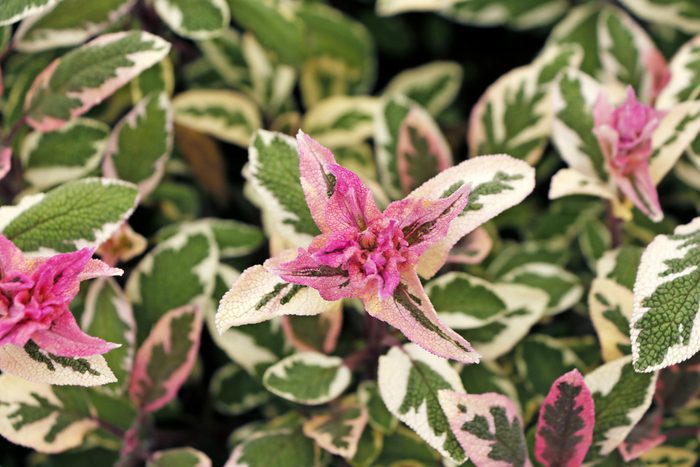
Silver Sabre Variegated Sage
Salvia officinalis, Zones 4 to 9
Any type of sage is prized in the garden, with soft, earthy-smelling leaves, but the leaves of Silver Sabre are lined with white, as though dipped in creamy paint. The leaves turn pink in cooler weather, and these foliage plants are easy to grow anywhere with decent drainage.
Why we love it: These foliage plants are edible, but also the flowers are attractive enough to lure pollinators as an ornamental.
Check out the top golden plants to make your garden glow.
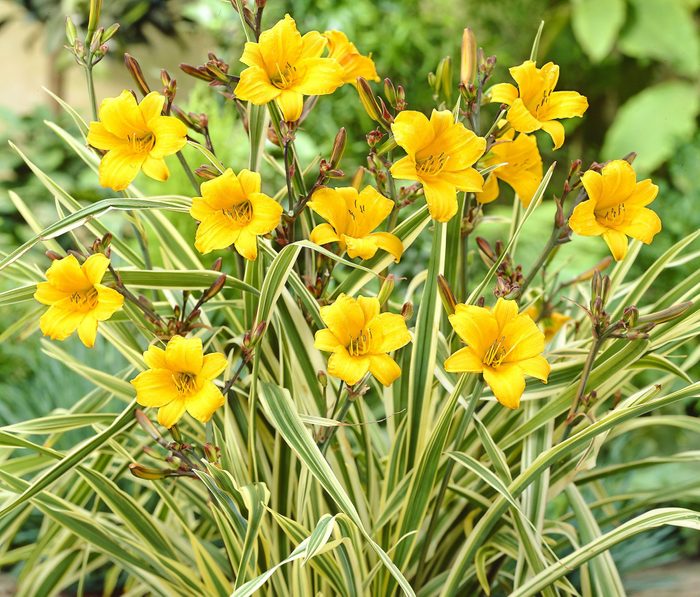
Golden Zebra Daylily
Hemerocallis ‘Malja’, Zones 4 to 9
With more than 90,000 daylily cultivars, there’s one for you! This beauty has dark yellow flowers that peak in early summer and slender leaves variegated with creamy white edges. As its name implies, each bloom comes and goes in one day.
Why we love it: This daylily grows well in most soils in full sun or part shade. It is striking when in bloom. When it’s not, the leaves on these foliage plants add plenty of appeal on their own.
Discover 10 types of lilies gardeners should grow.
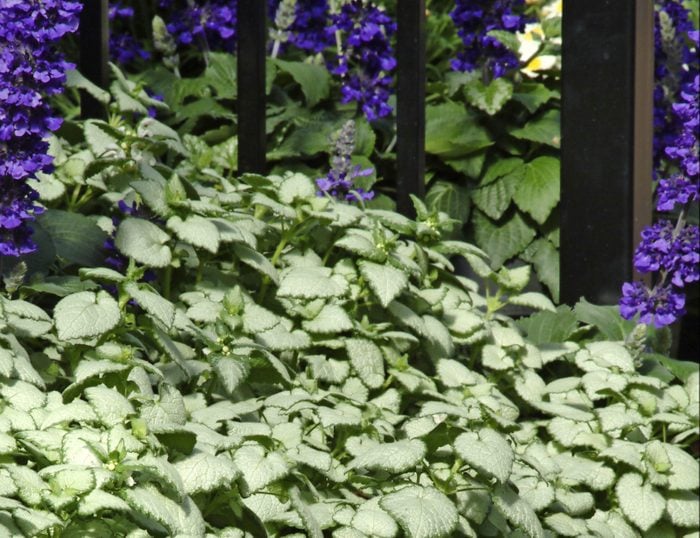
White Nancy Spotted Deadnettle
Lamium Maculatum, Zones 3 to 8
Imagine if a quick frost partially covered leaves in your garden, only they didn’t die. That’s how the leaves on White Nancy spotted deadnettle look—as though they were kissed by frost in early summer. The dainty white blooms of this ground cover are a bonus.
Why we love it: Deadnettle spreads easily, making it a perfect low-maintenance ground cover in part or full shade areas of the garden. Be aware: It can be invasive.
Check out how to grow Dahlberg daisy plants—these drought and heat tolerant flowering plants are great at attracting butterflies.
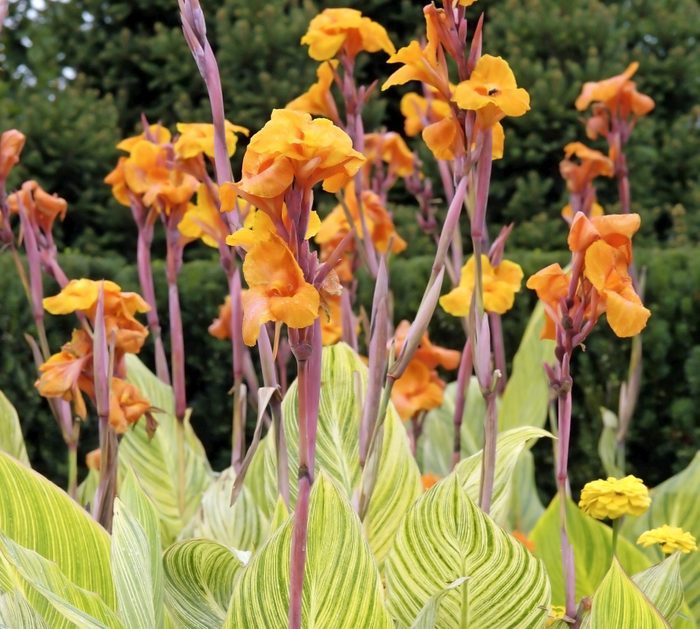
Bengal Tiger Canna Lily
Canna Americanallis var. variegata, Zones 8 to 11
Bengal Tiger’s leaves are mesmerizing as light yellow and dark green weave back and forth. Show-stopping orange flowers top the plant’s tall stalks, which reach as high as 6 feet. The leaves themselves are remarkable on their own. Gardeners in the North will want to dig up canna bulbs and store them indoors for winter.
Why we love it: It thrives in a wide range of soils or as an aquatic plant, living in 6 inches of water.
Here’s how to overwinter non-hardy bulbs and tropical plants.
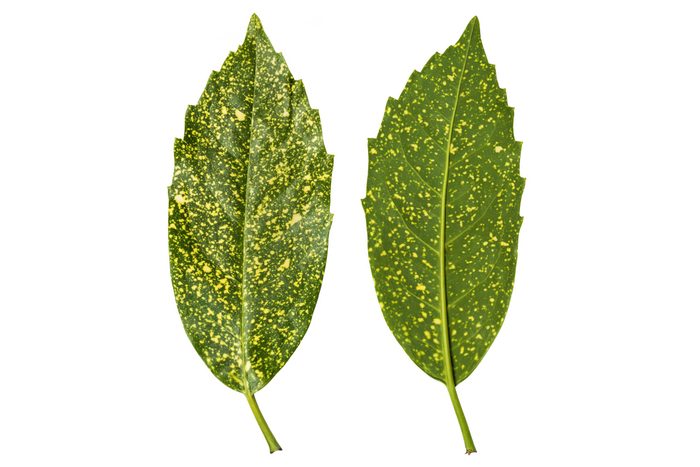
Spotted Laurel
Aucuba japonica, Zones 7 to 10
Spotted laurel features 8-inch-long evergreen leaves marked with bright yellow spots. These foliage plants are quite large, reaching between 6 and 10 feet tall. Small purple blooms open in early spring.
Why we love it: It grows well in nutritionally poor soils and tolerates drought and air pollution. Plus, it adds interest to any shady, dry area.
Psst—we found even more early blooming flowers for spring.
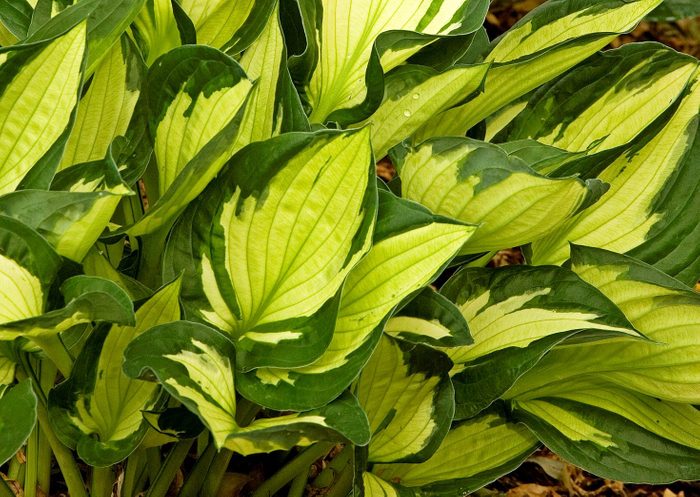
Whirlwind Hosta
Hosta, Zones 3 to 8
Light green swirls seem to move inside dark green leaves and add drama to shady spaces. The intrigue in Monrovia’s Whirlwind hostas can’t be overstated. The color of the center changes throughout the growing season from a creamy white to light green to dark green. Hummingbirds may visit the pale lavender blooms.
Why we love it: Its low-maintenance nature helps this hosta perform well in rural gardens and city plots.
Check out the top 10 easy-to-grow native plants.
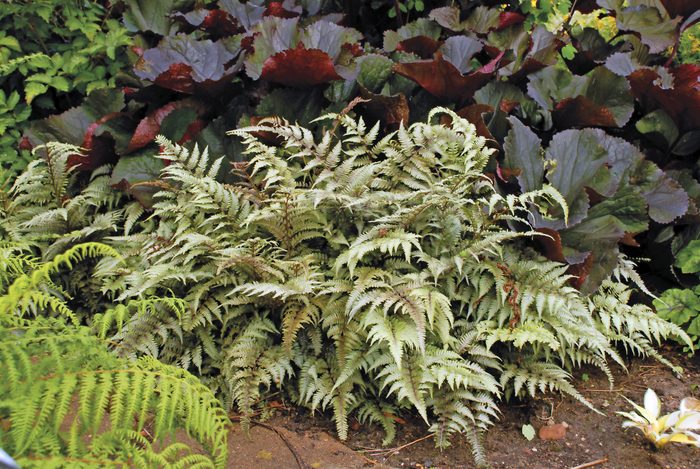
Japanese Painted Fern
Athyrium niponicum var. pictum, Zones 4 to 9
Perfect for shady areas in woodland gardens, these ferns feature nearly 2-foot-long triangular fronds with silver centers that almost glow. Silver coloring peaks in spring then fades to green by midsummer, still contrasted by its maroon midribs. Try different varieties for unique coloring. Pictum (shown here) is silver and red; Burgundy Lace is silver and burgundy.
Why we love it: Expect this to be a low-maintenance fern for those tucked-away spots that need intrigue.
Try these easy plants you can grow in containers.
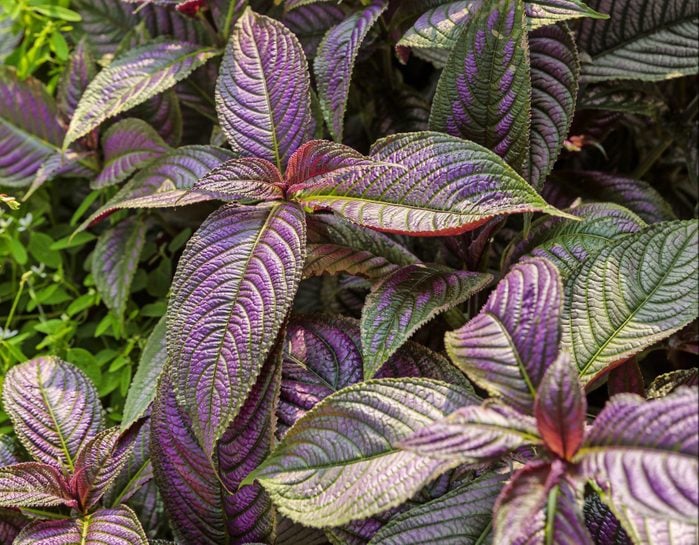
Persian Shield
Strobilanthes auriculatus var. dyeriana, Zones 8 to 10 or annual
Beautifully patterned purple and green leaves are the real draw to growing Persian shield. It performs best when grown in part or full sun and will likely reach more than 2 feet tall.
Why we love it: With patience, Persian shield can adapt as a houseplant. In the North, grow it in a pot outside in summer and bring it inside for the cold months.
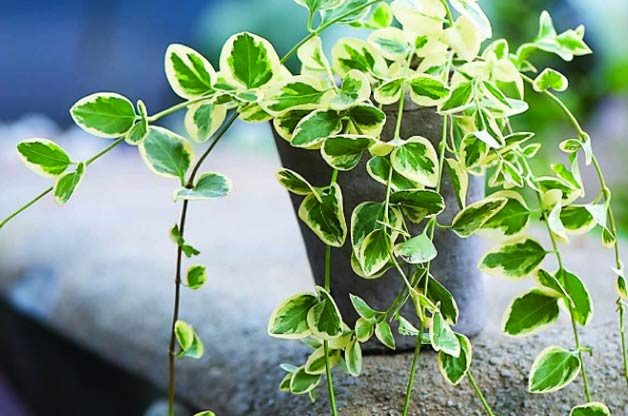
Vinca
Vinca, Zones 4-11
Our list wouldn’t be complete without vinca. The ultimate trailing container plant, it looks good with just about anything. Grow it in sun to partial shade for best results, and expect it to reach 3 to 6 feet. While vinca is sometimes grown as an annual, look for information on specific varieties. Also note that vinca is invasive in some areas.
Why we love it: It’s easy to find. With some container plants, it can be hard to track down the right variety or cultivar, but vinca is readily available at most nurseries.
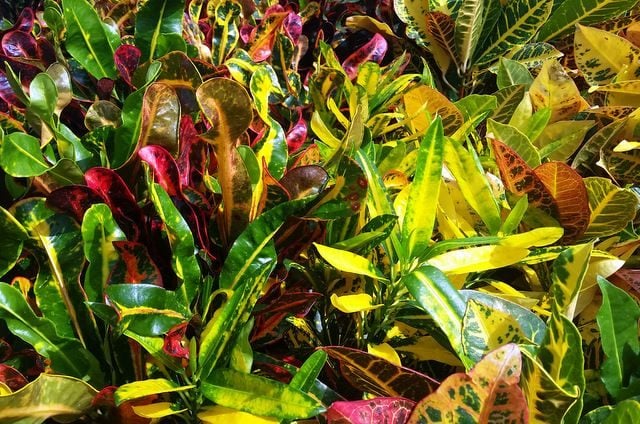
Croton
Codiaeum, annual
While it’s technically a perennial in warm climates, most of North America grows croton as an annual in containers. You won’t find a more colorful foliage option, often with six or more hues on a single plant. This tropical favorite grows up to 4 feet and does best in sun to partial shade.
Why we love it: What’s not to love? The colors are stunning, and you can bring it indoors in colder months. Look for it in the tropicals section of your nursery.

Papyrus
Cyperus papyrus, Zones 9-11
With its wild, bushy heads on stately stems, papyrus adds something special to a container. This tropical plant loves heat and humidity. The dwarf variety (Cyperus profiler) grows in Zones 7 or 8 to 11, while most others can be outside year-round only in warm climates. For these, grow as an annual, or winter them indoors.
Why we love it: Whether you grow the dwarf variety, which reaches 3 feet, or the taller ones that can get up to 6, papyrus makes an eye-catching centerpiece for containers.
Try these modern minis: small plants for small yards.
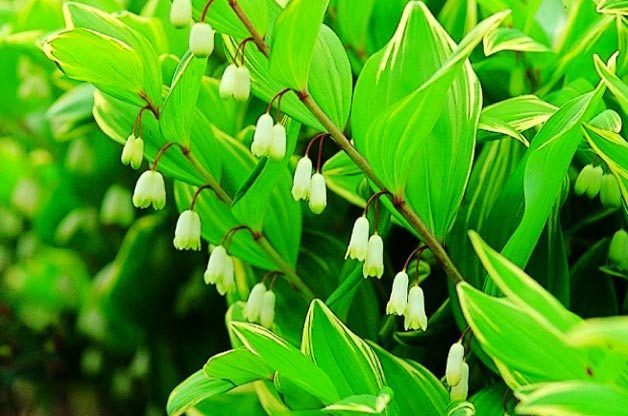
Solomon’s Seal
Polygonatum, Zones 3-9
A perennial favorite in the garden, it’s now an elegant choice for containers as well. This plant has beautiful arching foliage with tiny flowers that peek out from under the leaves. It grows 6 inches to 3 feet in partially shaded areas.
Why we love it: Even though the flowers are short-lived, they have a delicate look that’s hard to resist. For pink blooms, try Polygonatum stewartianum. For the traditional white blossoms and variegated foliage, pick Polygonatum odoratum ‘Variegatum’.
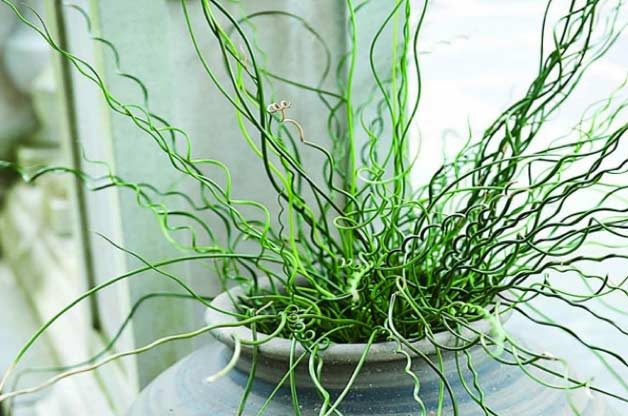
Rush
Juncus, Zones 3-9
Gardeners have been using rush in containers for decades, and it’s not hard to see why: It’s a bit grassy and a little thready, and it seems to have a mind of its own. Rush is a perennial that thrives in wet areas. It grows up to 2 feet tall and likes sun to partial shade.
Why we love it: Corkscrew rush is a must-try plant for containers. Its wild foliage is guaranteed to add personality to your space.
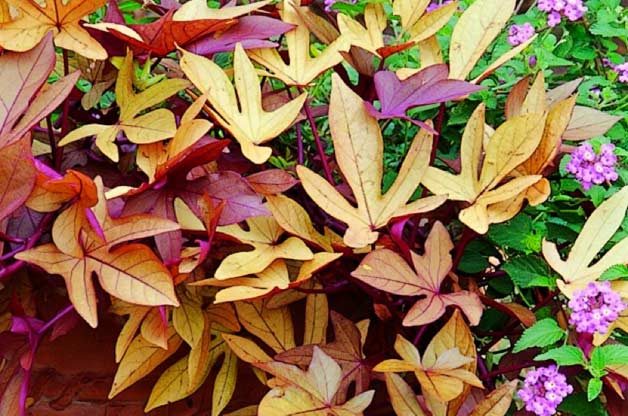
Sweet Potato Vine
Ipomoea batatas, annual
A close relative of morning glories, sweet potato vines have the same climbing habit, growing up to 20 feet. You’ll easily find a cultivar to meet your needs: Blackie comes in near-black shades that go with every other color, Sweet Caroline Bronze (pictured here) sports gorgeous caramel tones and Tricolor boasts shades of green, white and pink.
Why we love it: These foliage plants complement a wide range of flowers. The robust nature of many varieties means that one plant goes a long way toward filling out a container.
We found easy ways to use vining plants all around your garden.
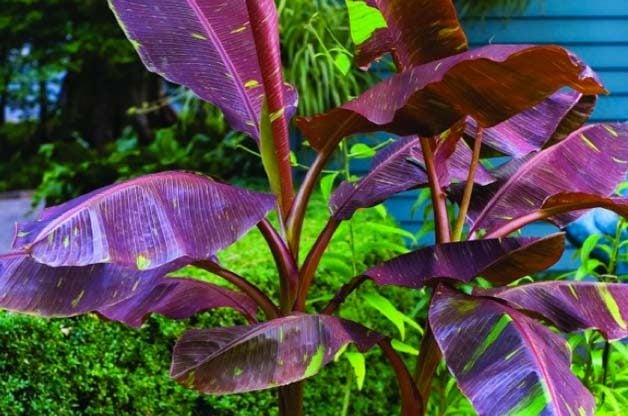
Banana Plant
(Musa, hardiness varies with species)
Even though it would be an annual in many parts of North America, most people don’t buy a banana plant to have for just one year. Use it to add drama to your containers in summer and then to bring a burst of green to the inside of your home in winter. It thrives best in warm conditions, in sun to partial shade.
Why we love it: The height—up to 6 feet—is wonderful for containers. You can grow a lot of plants beneath it.
Check out the top 10 best houseplants for low light.
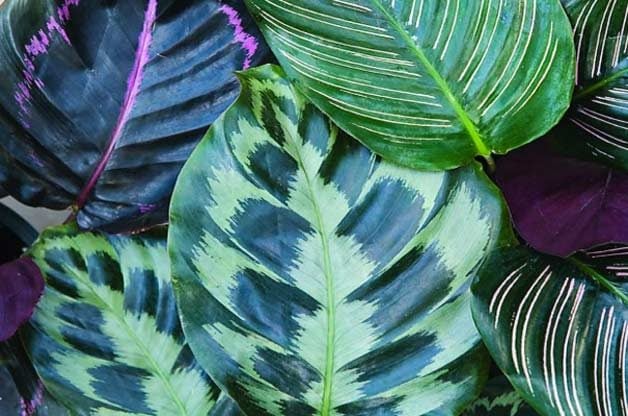
Peacock Plant
(Calathea, Zones 10 and 11, annual elsewhere)
Here’s a case of an indoor plant moving outside. Peacock plant has striking 4- to 8-inch leaves; the plant can eventually grow up to 4 feet tall and 2 feet wide. It grows best in warm areas with partial to full shade.
Why we love it: We admit the name won us over right away. But any plant that likes shade and looks this good is OK in our book.
Don’t miss the top 10 hummingbird plants that grow in shade.
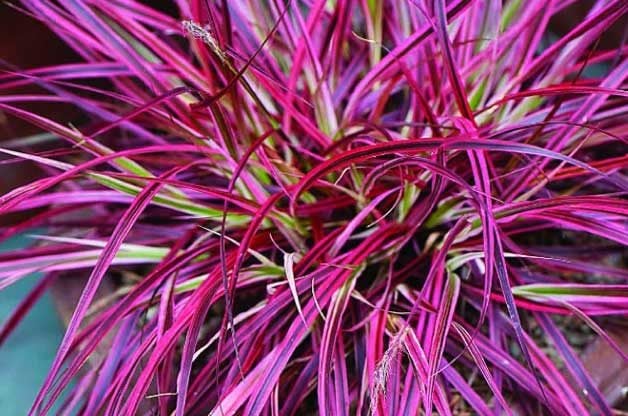
Fountain Grass
(Pennisetum setaceum, Zones 8-11)
Fountain grass is grown mostly as an annual and peaks in midsummer to early autumn. It has pinkish spikes and narrow panicles. Growing up to 3 feet tall, it prefers full sun.
Why we love it: These fine foliage plants adds texture to the garden and comes in green, reddish-purple and new colorful varieties like Fireworks (shown here).
For more autumn color, check out the top 10 fall blooming perennials for your garden.
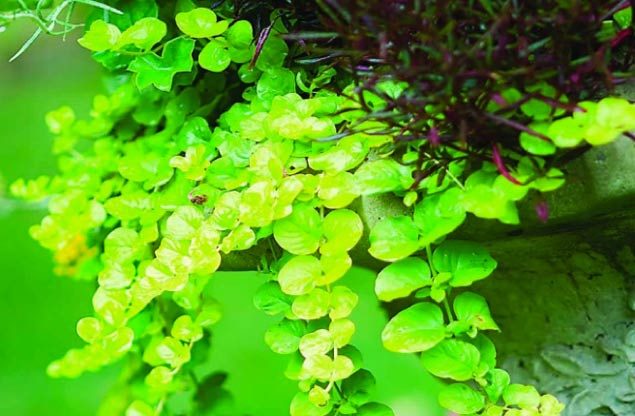
Golden Creeping Jenny
Lysimachia nummularia, Zones 3-9
Creeping Jenny, also known as moneywort, includes the cultivar Aurea, with golden leaves and yellow late-spring-to-early-summer flowers. These foliage plants do fine in either sun or shade, though they prefer a mix. Do watch where they spread, however, as the tendrils might try to creep into your lawn.
Why we love it: A little goes a long way. You don’t need much creeping Jenny to make a big impact.
Looking for more garden drama? Try these dark colored flowers that are almost black.
